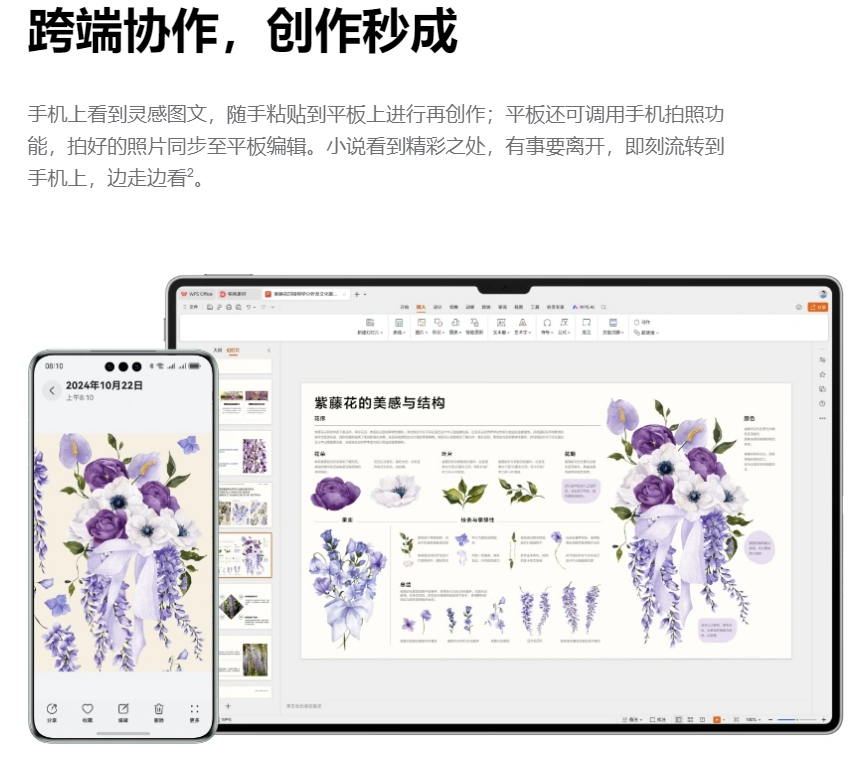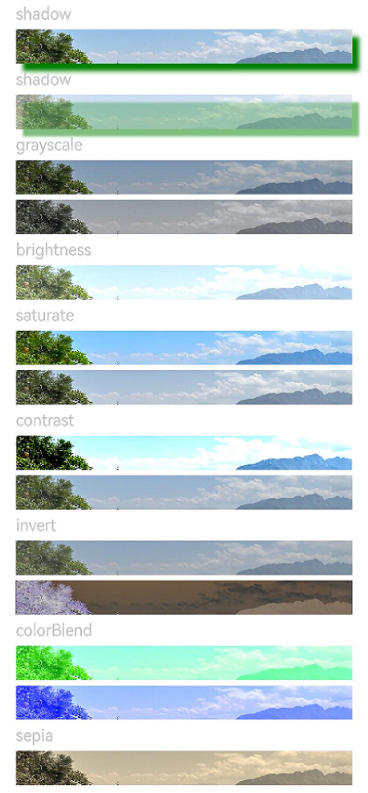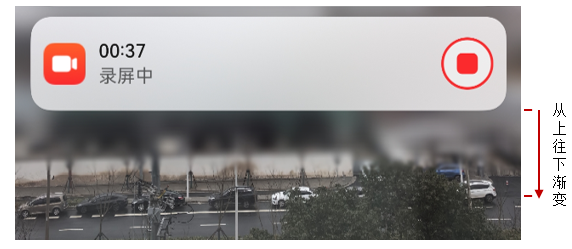基于 HarmonyOS 5.0 (Next)技术的渐变模糊效果技术实现【代码实战】
HarmonyOS 5.0(Next)作为华为自主研发的操作系统,以其强大的性能和丰富的开发功能吸引了众多开发者。本文将详细介绍如何在 HarmonyOS 5.0(Next)中实现渐变模糊效果,并通过代码实战展示具体操作步骤。
ArkTS:HarmonyOS 5.0 的新编程语言
ArkTS(Ark TypeScript)是华为为其操作系统 HarmonyOS 5.0 推出的一种全新编程语言,它基于 TypeScript 并针对 HarmonyOS 的多设备协同与高性能需求进行了优化。与传统的编程语言相比,ArkTS 具备了对分布式架构、跨设备通信和高效资源管理的原生支持。
为什么选择 ArkTS?
跨设备支持:HarmonyOS 致力于实现多设备协同工作,从手机到智能家居,再到可穿戴设备,ArkTS 专为这种分布式场景设计,提供了简化的编程模型,使开发者能够更轻松地构建跨设备应用。
高效的性能:与 JavaScript/TypeScript 相比,ArkTS 对内存管理、计算效率等方面进行了优化,能够更好地支持大规模数据处理和复杂的应用场景,满足现代智能设备的高性能要求。
丰富的 API 支持:ArkTS 充分利用 HarmonyOS 提供的丰富系统 API,特别是在设备间无缝连接、消息传递和同步数据处理等方面,极大简化了开发者的工作。
简洁的语法:作为 TypeScript 的扩展,ArkTS 保留了 TypeScript 的简洁语法,并结合了针对 HarmonyOS 的特殊功能,降低了开发门槛,使得开发者能够快速上手。
通过 ArkTS,HarmonyOS 5.0 不仅提升了开发效率,还能够实现跨设备、跨平台的智能互联体验,推动智能终端的全面发展。
准备工作
在开始之前,请确保你已经安装了最新的 HarmonyOS 开发环境,并创建了一个基础的 HarmonyOS 项目。渐变模糊效果实现步骤
创建基础页面
首先,我们需要创建一个基础页面,该页面将作为渐变模糊效果的背景。
@Entry@Componentstruct MainPage { build() { Column() { Image($r('app.media.background')) .width('100%') .height('100%') .objectFit(ImageFit.Cover) } }}
复制代码
添加模糊效果
HarmonyOS 提供了 foregroundBlurStyle 属性来实现模糊效果。我们可以利用这个属性为页面添加模糊效果。
@Entry@Componentstruct BlurPage { build() { Stack() { // 原始内容 Image($r('app.media.background')) .width('100%') .height('100%') .objectFit(ImageFit.Cover) // 模糊层 .foregroundBlurStyle(BlurStyle.Medium, { colorMode: ThemeColorMode.LIGHT, adaptiveColor: AdaptiveColor.DEFAULT, scale: 1.0 }) } }}
复制代码
实现渐变效果
为了实现渐变模糊效果,我们可以利用 linearGradient 属性。在模糊层上添加一个覆盖层,并使用 linearGradient 属性设置颜色渐变。
@Entry@Componentstruct GradientBlurPage { @State gradientColors: Array<[Color, number]> = [ [Color.White, 0], [Color.Black.withAlpha(0.5), 0.5], [Color.Black.withAlpha(0), 1] ]; build() { Stack() { // 原始内容 Image($r('app.media.background')) .width('100%') .height('100%') .objectFit(ImageFit.Cover) // 模糊层 .foregroundBlurStyle(BlurStyle.Medium, { colorMode: ThemeColorMode.LIGHT, adaptiveColor: AdaptiveColor.DEFAULT, scale: 1.0 }) // 渐变覆盖层 .overlay( Column() .width('100%') .height('100%') .linearGradient({ colors: this.gradientColors, direction: GradientDirection.Vertical }) ) } }}
复制代码
@Entry @Component struct ImageExample1 { private_resource1: Resource = $r('app.media.icon'); @State image_src: Resource = this.private_resource1; build() { Column() { Flex({ direction: FlexDirection.Column, alignItems: ItemAlign.Start }) { Row({ space: 5 }) { Image(this.image_src) .linearGradientBlur(60, { fractionStops: [[0, 0], [0, 0.33], [1, 0.66], [1, 1]], direction: GradientDirection.Bottom }) } } } } }
复制代码
// xxx.ets@Entry@Componentstruct ImageEffectsExample { build() { Column({ space: 5 }) { // 添加阴影效果,图片效果不变 Text('shadow').fontSize(15).fontColor(0xCCCCCC).width('90%') Image($r('app.media.image')) .width('90%') .height(30) .shadow({ radius: 10, color: Color.Green, offsetX: 20, offsetY: 20 })
// 添加内部阴影效果 Text('shadow').fontSize(15).fontColor(0xCCCCCC).width('90%') Image($r('app.media.image')) .width('90%') .height(30) .shadow({ radius: 5, color: Color.Green, offsetX: 20, offsetY: 20,fill:true }).opacity(0.5)
// 灰度效果0~1,越接近1,灰度越明显 Text('grayscale').fontSize(15).fontColor(0xCCCCCC).width('90%') Image($r('app.media.image')).width('90%').height(30).grayscale(0.3) Image($r('app.media.image')).width('90%').height(30).grayscale(0.8)
// 高光效果,1为正常图片,<1变暗,>1亮度增大 Text('brightness').fontSize(15).fontColor(0xCCCCCC).width('90%') Image($r('app.media.image')).width('90%').height(30).brightness(1.2)
// 饱和度,原图为1 Text('saturate').fontSize(15).fontColor(0xCCCCCC).width('90%') Image($r('app.media.image')).width('90%').height(30).saturate(2.0) Image($r('app.media.image')).width('90%').height(30).saturate(0.7)
// 对比度,1为原图,>1值越大越清晰,<1值越小越模糊 Text('contrast').fontSize(15).fontColor(0xCCCCCC).width('90%') Image($r('app.media.image')).width('90%').height(30).contrast(2.0) Image($r('app.media.image')).width('90%').height(30).contrast(0.8)
// 图像反转比例 Text('invert').fontSize(15).fontColor(0xCCCCCC).width('90%') Image($r('app.media.image')).width('90%').height(30).invert(0.2) Image($r('app.media.image')).width('90%').height(30).invert(0.8)
// 叠色添加 Text('colorBlend').fontSize(15).fontColor(0xCCCCCC).width('90%') Image($r('app.media.image')).width('90%').height(30).colorBlend(Color.Green) Image($r('app.media.image')).width('90%').height(30).colorBlend(Color.Blue)
// 深褐色 Text('sepia').fontSize(15).fontColor(0xCCCCCC).width('90%') Image($r('app.media.image')).width('90%').height(30).sepia(0.8)
// 色相旋转 Text('hueRotate').fontSize(15).fontColor(0xCCCCCC).width('90%') Image($r('app.media.image')).width('90%').height(30).hueRotate(90) }.width('100%').margin({ top: 5 }) }}
复制代码
动态调整渐变效果
为了让渐变效果更加动态,我们可以添加一些交互逻辑,例如通过滑动条来调整渐变效果。
@Entry@Componentstruct DynamicGradientBlurPage { @State gradientPosition: number = 0.5; build() { Column({ space: 20 }) { // 滑动条 Slider() .value(this.gradientPosition) .range({ min: 0, max: 1 }) .onChange((value) => { this.gradientPosition = value; }) // 渐变模糊页面 GradientBlurComponent({ gradientPosition: this.gradientPosition }) } }}
复制代码
@Componentstruct GradientBlurComponent { @Prop gradientPosition: number; @State gradientColors: Array<[Color, number]> = [ [Color.White, 0], [Color.Black.withAlpha(0.5 * this.gradientPosition), this.gradientPosition], [Color.Black.withAlpha(0), 1] ]; build() { Stack() { // 原始内容 Image($r('app.media.background')) .width('100%') .height('100%') .objectFit(ImageFit.Cover) // 模糊层 .foregroundBlurStyle(BlurStyle.Medium, { colorMode: ThemeColorMode.LIGHT, adaptiveColor: AdaptiveColor.DEFAULT, scale: 1.0 }) // 渐变覆盖层 .overlay( Column() .width('100%') .height('100%') .linearGradient({ colors: this.gradientColors, direction: GradientDirection.Vertical }) ) } }}
复制代码
添加事件交互
为了让用户的体验更加丰富,可以添加一些交互事件。例如,通过用户手势操作触发渐变模糊效果的变化。以下示例展示了如何通过拖动手势动态调整模糊和渐变透明度。
使用手势调整模糊效果
@Entry@Componentstruct GestureControlledBlurPage { @State blurRadius: number = 10; @State gradientOpacity: number = 0.5;
build() { Stack() { // 背景图片 Image($r('app.media.background')) .width('100%') .height('100%') .objectFit(ImageFit.Cover)
// 模糊层 .foregroundBlurStyle(BlurStyle.Custom, { blurRadius: this.blurRadius, scale: 1.0 })
// 渐变覆盖层 .overlay( Column() .width('100%') .height('100%') .linearGradient({ colors: [ [Color.White.withAlpha(this.gradientOpacity), 0], [Color.Black.withAlpha(this.gradientOpacity), 1] ], direction: GradientDirection.Vertical }) )
// 拖动手势 .gesture( DragGesture() .onUpdate((event) => { this.blurRadius = Math.min(30, Math.max(5, event.deltaX / 10)); this.gradientOpacity = Math.min(1, Math.max(0, event.deltaY / 200)); }) ) } }}
复制代码
通过手势调整背景位置
除了调整模糊程度,还可以通过手势移动背景图片的位置,创造动态视差效果。
@Entry@Componentstruct ParallaxBlurPage { @State offsetX: number = 0; @State offsetY: number = 0;
build() { Stack() { // 背景图片 Image($r('app.media.background')) .width('110%') .height('110%') .objectFit(ImageFit.Cover) .offset({ x: this.offsetX, y: this.offsetY })
// 模糊层 .foregroundBlurStyle(BlurStyle.Medium, { scale: 1.0 })
// 拖动手势 .gesture( DragGesture() .onUpdate((event) => { this.offsetX += event.deltaX; this.offsetY += event.deltaY; }) ) } }}
复制代码
为控件添加渐变模糊效果
不仅仅是图片,HarmonyOS 中其他控件也可以实现渐变模糊效果,比如为弹窗、按钮等 UI 元素添加模糊背景。
示例:模糊背景的弹窗
@Entry@Componentstruct BlurPopupPage { @State showPopup: boolean = false;
build() { Stack() { // 主页面内容 Column() { Button('Show Popup') .onClick(() => { this.showPopup = true; }) }
// 弹窗模糊背景 if (this.showPopup) { Stack() .width('100%') .height('100%') .backgroundColor(Color.Black.withAlpha(0.5)) .foregroundBlurStyle(BlurStyle.Light, { scale: 1.0 }) .onClick(() => { this.showPopup = false; })
// 弹窗内容 Column() .width('80%') .height('50%') .backgroundColor(Color.White) .borderRadius(10) .center() .padding(20) .text('This is a popup!') } } }}
复制代码
这个示例展示了在点击按钮后,模糊背景与弹窗内容的结合效果,为应用界面带来高质量的视觉体验。
总结
通过上述步骤,我们成功在 HarmonyOS 5.0(Next)上实现了渐变模糊效果。从创建基础页面到添加模糊效果,再到实现渐变效果以及动态调整,每一个步骤都经过了详细的介绍和代码展示。希望这篇文章能够帮助到你,让你在 HarmonyOS 开发中更加得心应手。
渐变模糊效果的实现是一个复杂但有趣的过程,它要求开发者在算法设计和性能优化方面都有深厚的功底。通过本文的介绍,我们了解了如何在 HarmonyOS 5.0(Next)系统上实现渐变模糊效果,并探讨了性能优化的方法。希望这些技术和代码示例能为开发者们提供有益的参考和启发。
心得
在这篇关于基于 HarmonyOS 5.0 (Next)实现渐变模糊效果的技术文中,作者详细介绍了如何在华为自主研发的操作系统上,通过简单而实用的代码实现独特的视觉效果。通过结合模糊、渐变以及动态调整等元素,开发者能够轻松为应用程序添加富有创意和互动性的界面设计。
首先,文章从基础页面搭建入手,通过Stack和Image控件展示了如何将图片设置为背景,并进一步通过foregroundBlurStyle属性实现模糊效果。这些基本操作为后续更复杂的效果打下了良好的基础。
然后,作者通过逐步引导我们如何将渐变效果融入模糊层,采用了linearGradient属性,配合不同的颜色渐变,实现了一个既简洁又精致的渐变模糊效果。对于开发者来说,这种方法非常直观,不仅减少了开发成本,还大大提高了用户界面的美观性和用户体验。
文章还介绍了如何通过交互元素来动态调整渐变模糊效果,包括利用滑动条、拖动手势等方式,这些互动性强的设计进一步提升了用户与界面之间的互动性,使得用户体验更加个性化和流畅。这种通过动态变化来增强视觉效果的方式,为应用程序注入了更多的生命力,也为开发者提供了更灵活的定制空间。
此外,文章还通过具体代码示例展示了如何为控件(如图片、弹窗、按钮等)添加渐变模糊效果,使得整个界面更加协调和一致。可以看出,HarmonyOS 的强大功能不仅体现在基础功能上,还在于它提供的灵活性和扩展性,让开发者可以通过各种创意实现更加多样化的界面设计。
总结而言,这篇文章展示了 HarmonyOS 5.0 (Next)的强大功能以及如何利用这些功能来实现炫酷的视觉效果。它不仅对开发者了解渐变模糊效果的实现过程具有重要意义,还为开发者提供了实际的操作指导和思路。无论是基础的模糊效果,还是动态渐变调整,甚至是手势控制,文章都为开发者提供了丰富的技术实现方案,具有较高的实用价值和技术参考意义。














评论